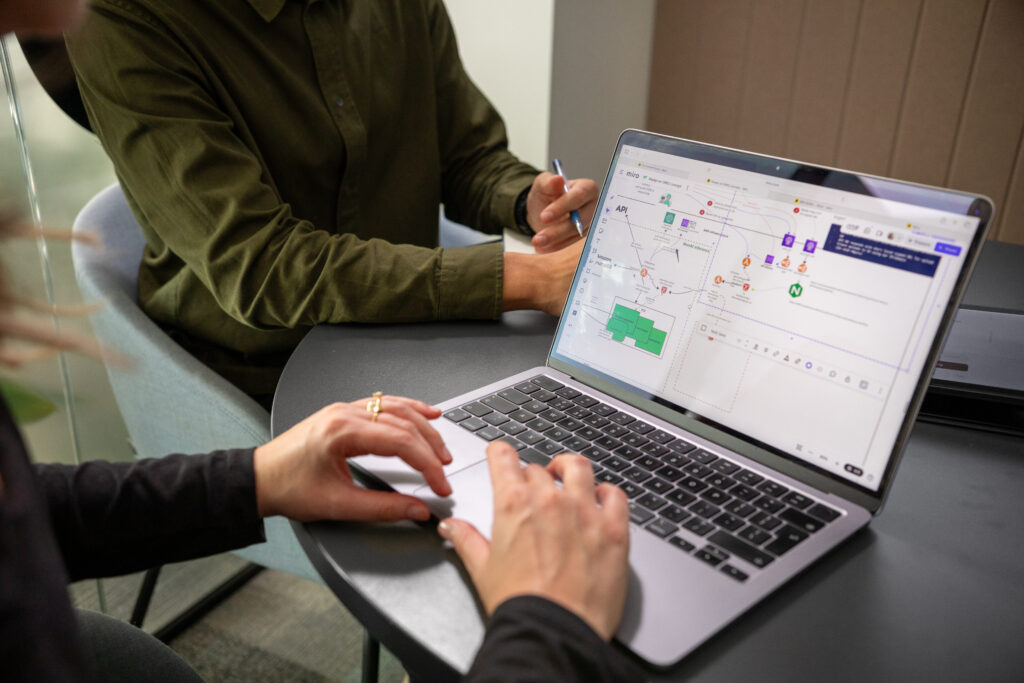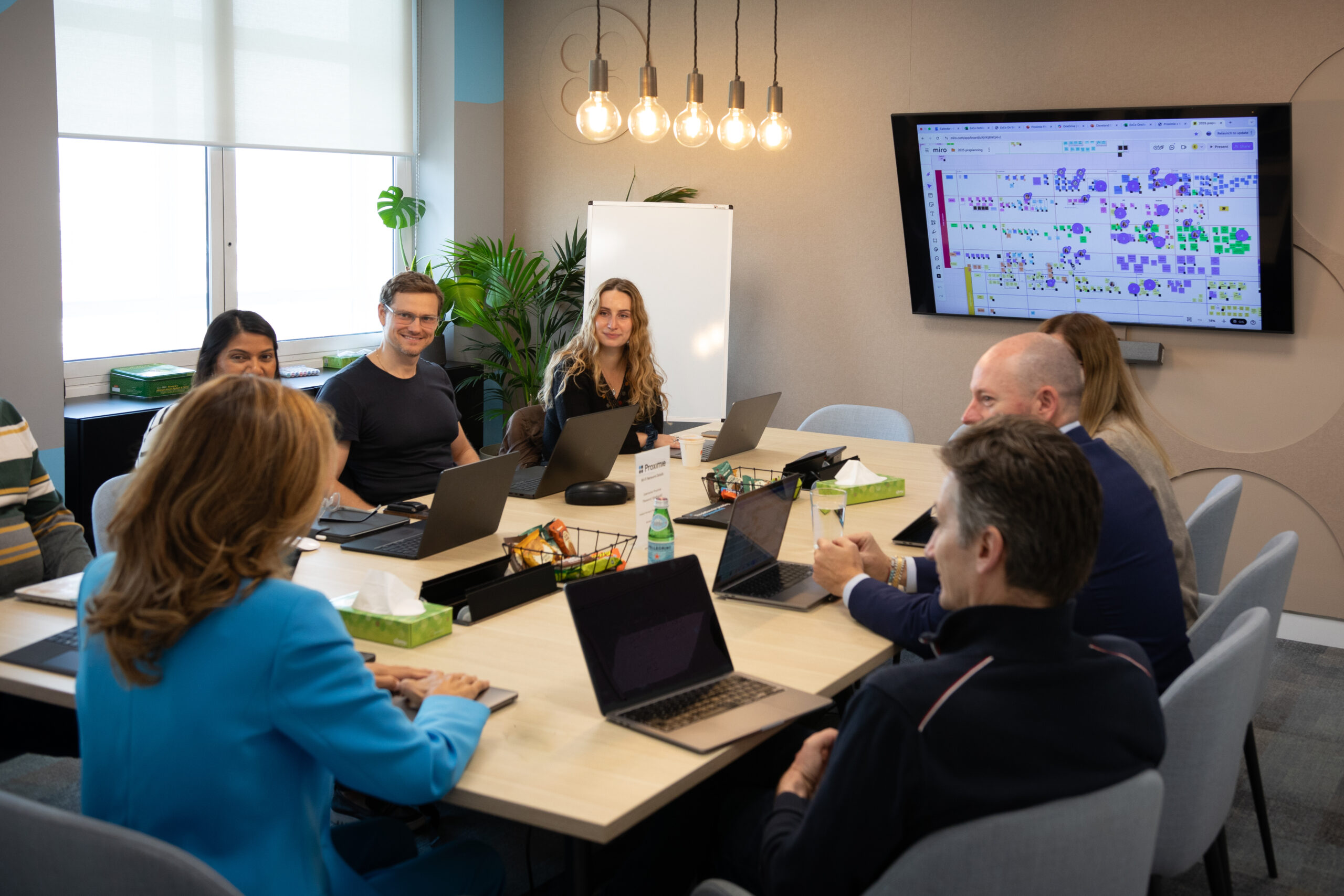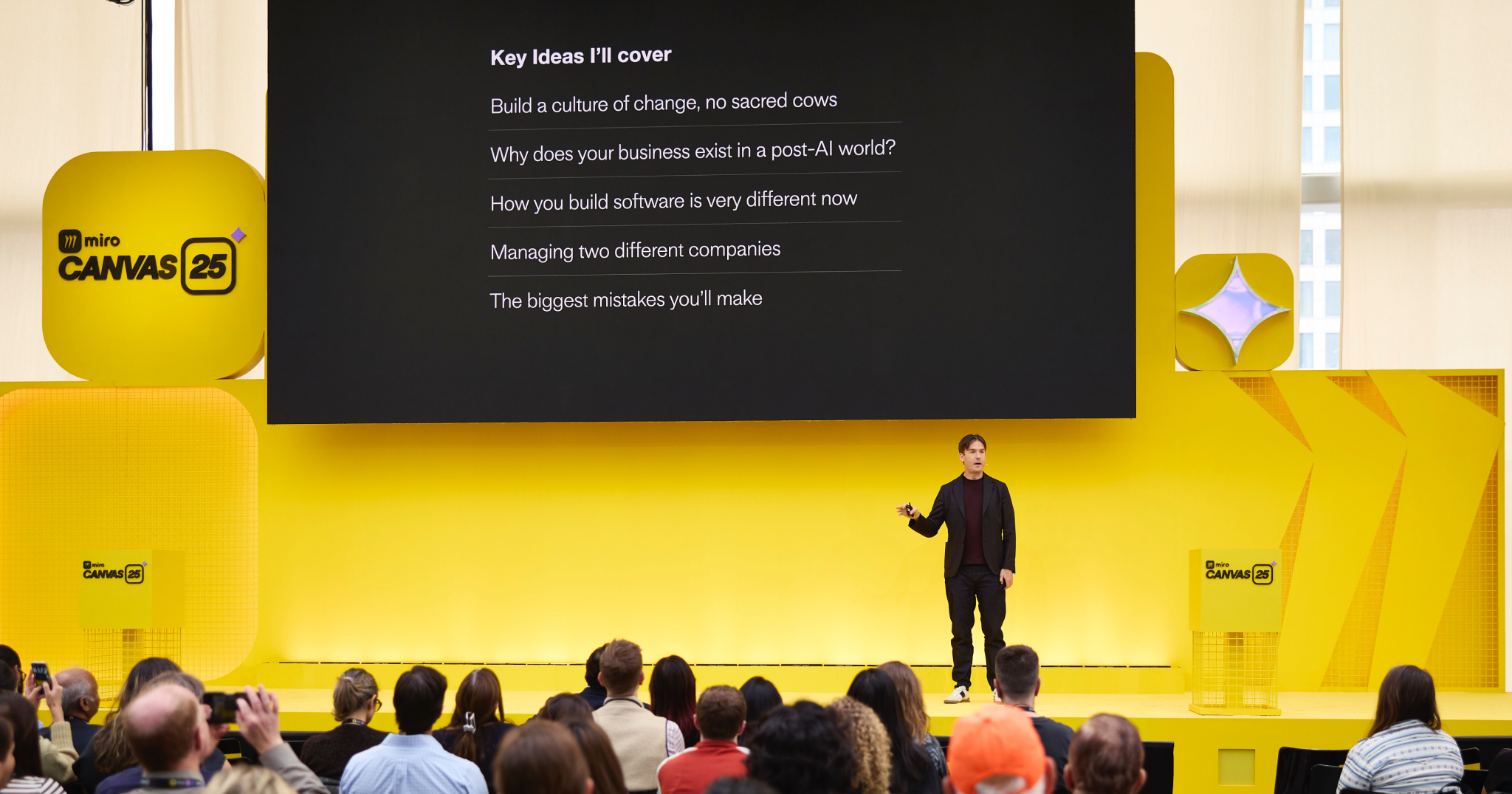Proximie is transforming operating rooms worldwide with software that connects surgical expertise across borders, captures critical procedural data, and drives better patient outcomes. But building cutting-edge healthcare technology comes with unique challenges — from navigating strict data compliance requirements to coordinating globally distributed teams across London, Beirut, and beyond.
Learn how the Series C healthtech company uses Miro to accelerate product development, streamline go-to-market planning, and prototype AI-powered solutions that are reshaping surgery.
Challenge: Building complex healthcare technology at scale
Proximie’s engineering team faces challenges most software companies don’t encounter. They:
- Process extremely sensitive patient data,
- Operate in environments with unstable connectivity, and
- Must ensure their platform works reliably in high-stakes surgical settings where lives are on the line.
“We have a number of technical challenges that not all software companies have,” explains Ciara McCarthy, Director of Product Delivery. “We have data compliance to worry about. We also have a lot of issues when it comes to connectivity and making sure that our users can use our product in a stable wifi environment, which is very, very complex.”
With 45 developers who have never all been in the same room together, Proximie needs tools that can support remote collaboration without slowing innovation.
Solution: Miro as teams’ central collaboration hub
From day one, Proximie has relied on Miro to bring their distributed teams together. They use Miro for everything from initial product planning to customer demonstrations, roadmapping, workshop planning, and executive offsites.
“We use Miro to make sure that our flows are fully understood. How is data going up to the cloud? What logic is being put on it? Does everyone understand that? We use Miro to map that out from the very beginning.”
Ciara McCarthy, Director of Product Delivery at Proximie
For their groundbreaking Intelligence Suite — a product that provides real-time operating room dashboards to hospital staff — Miro became essential for visualizing complex data flows. The team mapped how sensor data moves through AI models, integrates with electronic health records, and displays on dashboards, all while maintaining strict data residency requirements across AWS regions globally.
“We use Miro to really nail down what the highlights are, what the soundbites are from different user groups,” Ciara explains about their user research process. “We will distill that down and we will produce it into a summary report using tools like Miro and Figma.”

Accelerating innovation with Miro AI
When Miro introduced AI-powered features, Proximie immediately saw opportunities to speed up their prototyping process.
Dr. Nadine Hachach-Haram, Founder and CEO at Proximie, recalls meeting Andrey Khusid, Miro’s own Founder and CEO, when he demonstrated new Miro capabilities at a conference: “He was showing me this prototype of Miro AI and how they were using it in the consumer sector. I was like, ‘Could we not do that in what we do in healthcare?'”
The Proximie team quickly put Miro AI to work. By feeding their live dashboard designs into Miro AI with different contextual requirements, they could generate multiple views in seconds — transforming a scheduler’s perspective into a nurse’s view, or adapting layouts for different user needs.
“We were able to do that in under a minute,” says Ciara. “We could see it could be incredibly useful to grow the product in the future.”
Impact: from prototype to production in months
The results speak for themselves. Proximie’s Intelligence Suite went from concept to production launch in just nine months — a remarkably fast timeline for a product handling sensitive healthcare data across global infrastructure.
“At the beginning of this year, we put the Intelligence Suite into production and now we’ve launched it, which is really exciting. To go from that at the beginning of this calendar year and to be in September and see it really come to life and see users engaging with it — I’ve never worked on anything as exciting as that.”
Ciara McCarthy, Director of Product Delivery at Proximie
The impact extends beyond faster development cycles. By using Miro to align cross-functional teams from commercial to engineering, Proximie can move with the agility needed to expand into new markets while maintaining their focus on patient care.
“It’s really important that those teams can come together and learn from each other,” says Victoria Hatcher, VP of Global Marketing and Sales at Proximie about their go-to-market planning. “Miro really provides us with a space in which to do that. Everyone has access to a view of what’s happening. They can add, they can annotate—keeping people on track together.”
The bigger picture
For Proximie, Miro represents more than just a productivity tool — it’s part of a broader philosophy about leveraging the right technology partners to achieve ambitious goals.
“When we try to solve these complex challenges, we have to think about what is that coalition of partners that’s gonna help us get there,” says Dr. Hachach-Haram. “Technology partners are a part of that. The tools we use at Proximie enable us to deliver a great product, enable us to engage with customers, and enable us therefore to make a difference for patients.”
As Proximie continues scaling globally — with plans to double their footprint this year — they’re using Miro to maintain the collaborative, customer-focused approach that’s been at the center of their business.
“We’re just at the beginning of what we can do with Miro AI. It’s much easier to show a customer what the potential is than to talk to them about it. And Miro is helping us do that in a really fast and scalable way.”
Dr. Nadine Hachach-Haram, Founder and CEO at Proximie




